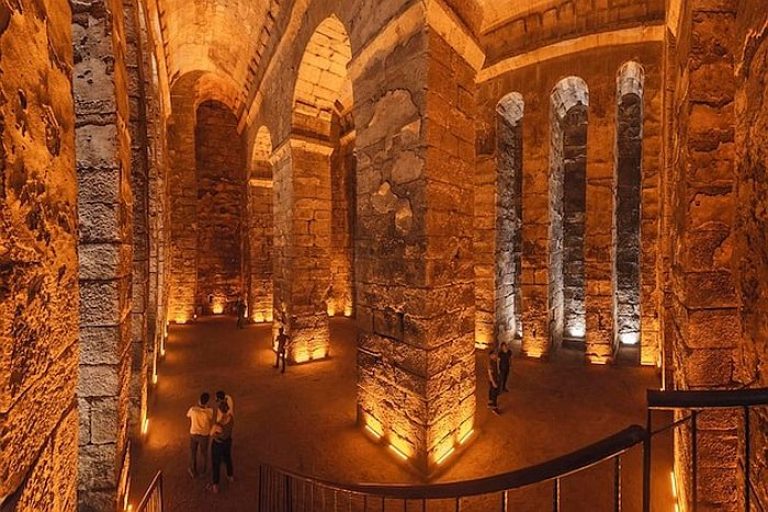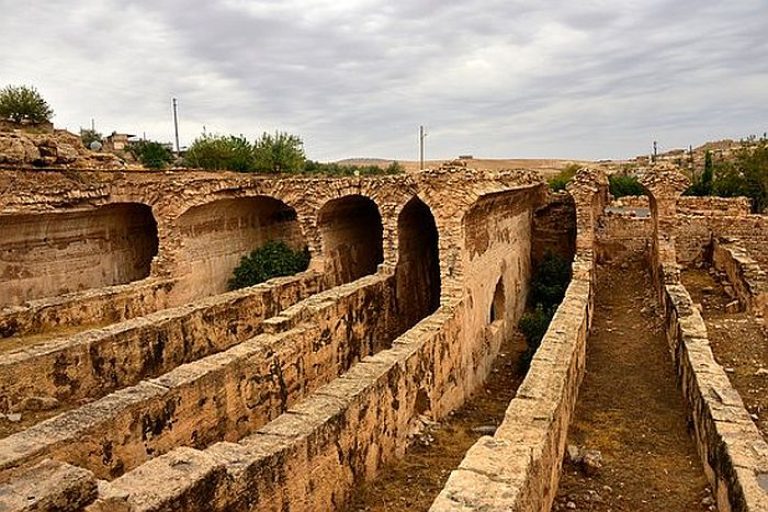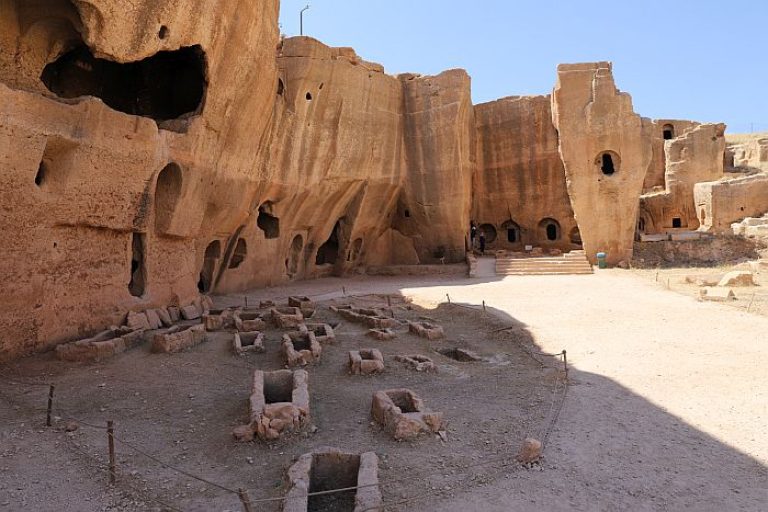Nestled amid the captivating landscapes near Mardin in southeastern Turkey, the ancient city of Dara emerges as a captivating testament to the region’s historical significance. With roots reaching back to the Roman period, Dara flourished as a vital urban center, strategically positioned along the trade routes connecting Mesopotamia and Anatolia.
Dara’s rise to prominence occurred during the 6th century when the Byzantine Emperor Anastasius I undertook ambitious construction projects, transforming the city into a formidable stronghold. The city’s strategic location near the border with the Sassanian Empire added to its military importance, and Dara became a vital frontier fortress.
The archaeological remnants of Dara unveil a cityscape adorned with remarkable structures, including city walls, gates, a grand basilica, and an impressive water reservoir. The city’s architectural marvels reflect a fusion of Roman, Byzantine, and Persian influences, showcasing the diverse cultural interactions that characterized this ancient crossroads.
Dara’s historical narrative is not only etched in its stone structures but also in the tales of conquests, cultural exchanges, and the ebb and flow of civilizations that shaped its destiny. As visitors wander through the ruins, they are transported back in time, experiencing the echoes of a once-thriving city that stood as a sentinel on the eastern frontier of the Byzantine Empire.
Join us on a journey through the ancient alleys and remnants of Dara near Mardin, where each stone tells a story of resilience, cultural fusion, and the enduring spirit of a city that has weathered the ages.








0 Comment